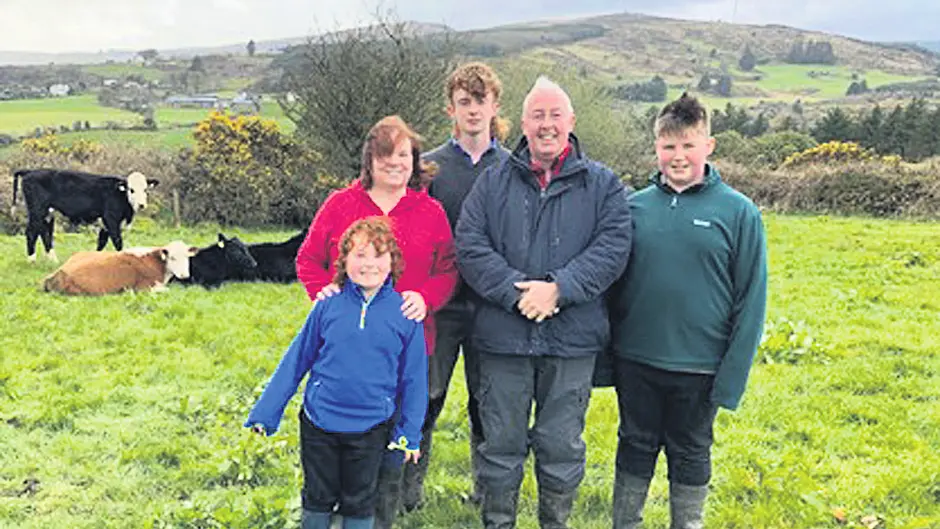Prionnsias and Máire Creedon are part of the Teagasc Future Beef/SignPost programme and their three sons are also taking a big interest in the business
PROINNSIAS Creedon farms with his wife Máire and sons Ciarán, Aodhán and Diarmuid in Clondrohid near Macroom.
They are farming 33.31 ha of variable land with a good bit of rough grazing ground. Their advisor is Anthony Dineen in the Teagasc office in Macroom.
The stocking rate is 141kg N/ha and 70-80 heifers are purchased annually at around 12-18 months. All of them are taken on to slaughter, finishing most at 22-24 months.
More recently they have purchased approximately 30 dairy-cross calves aged three to four weeks and will take these through to slaughter, also at around 22-24 months of age.
The boys Ciarán, Aodhán and Diarmuid have taken a great interest in this enterprise and get involved in managing the young calves.
The Creedons are part of the Macroom Grass 10 Discussion Group and have been one of the two host farms for them for a couple of years.
All covers are recorded on PastureBase and they are measuring grass on the farm using a plate meter.
This year the cattle are running in batches of roughly 24, so as to move through paddocks faster and have the cattle going into fresh grass every three days.
A fodder budget for next winter was completed for the farm. Without allowing for feeding any ration, 734 bales of silage are needed for 50 weanlings and 55 store cattle for a 5.5 month winter. They will have in the region of 180 bales left over and the rest will come from 1st and 2nd cut silage and grass surpluses. The Creedons aim for good quality silage of 70% DMD or over, as they are in a finishing system and the first cut is planned for the late May. Soil samples were taken through the signpost programme on Creedons farm and a nutrient management plan completed.
Over 45% of the farm is in a good soil fertility status, ie pH over 6.2 and a P and K index of 3 or 4.
A total of 31% of the farm has a pH of less than 6.2 and over 100 tonnes of lime will be required over the coming years to rectify this.
Slurry samples were sent for lab analysis to accurately gauge the N,P,K value on the farm and the aim is to maximise the use of slurry to maintain the P and K status for the farm. From now on all slurry will be spread by Less to reduce emissions and retain more N for grass growth.
Proinnsias is planning to move the finishing heifers from a loose shed to a slatted shed that is now free, as the store cattle have been let out to grass.
He measured the width and length of the pens to help decide how many heifers would fit at 0.5 m of feeding space for optimum performance. Each pen can hold nine heifers, allocated to pens according to weight.
• Anthony Dineen is a business & technology beef advisor based in Teagasc Macroom. He also specialises in soil fertility and the environment.









